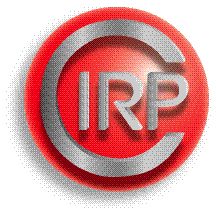Definition
Materials
Carbon-fiber-reinforced plastic (CFRP) is a multiphase material consistent of the carbon fibers which are embedded into the polymeric matrix material. The third phase of the material is the interface which describes the zone between the fibers and the matrix material. CFRP is known by its excellent mechanical properties and the anisotropic material behavior.
GLARE (glass-fiber-reinforced aluminum) is a composite material consisting of thin aluminum and glass-fiber-reinforced plastic (GFRP) layers.
Machinability
The machining process is used to separate the material, e.g., to generate a certain shape or geometry of the workpiece and to improve the surface quality. The machining of CFRP or composites is often difficult because of the inhomogeneous and anisotropic material properties.
Theory and Application
Introduction
Because of their excellent weight-specific properties,...
References
Bhatnagar N, Ramakrishnan N, Naik N, Komanduri R (1995) On the machining of fiber reinforced plastic (FRP) composite laminates. Int J Mach Tools Manuf 35(5):701–716
Brinksmeier E, Fangmann S, Rentsch R (2011) Drilling of composites and resulting surface integrity. CIRP Ann Manuf Technol 60(1):57–60
Chang C-S (2006) Turning of glass-fiber reinforced plastics materials with chamfered main cutting edge carbide tools. J Mater Process Technol 180(1–3):117–129
Davim JP, Reis P (2005) Damage and dimensional precision on milling carbon fiber-reinforced plastics using design experiments. J Mater Proc Technol 160(2):160–167
Ferreira JR, Coppini NL, Miranda GWA (1999) Machining optimisation in carbon fibre reinforced composite materials. J Mater Process Technol 92–93:135–140
Kaneeda T (1989) CFRP cutting mechanism. In: Proceeding of the 16th North American manufacturing research conference of the SME 15/3, Champaign, pp 216–221
Klocke F, König W, Rummenhöller S, Würtz C (1999) Milling of advanced composites, Chapter 8. In: Jahanmir S, Ramulu M, Koshy P (eds) Machining of ceramics and composites. Marcel Dekker, New York, pp 249–265
Koplev A, Lystrup A, Vorm T (1983) The cutting process, chips and cutting forces in machining CFRP. Composites 14(4):371–376
Pecat O, Brinksmeier E (2014a) Low damage drilling of CFRP/titanium compound materials for fastening. Procedia CIRP 13:1–7
Pecat O, Brinksmeier E (2014b) Tool wear analyses in low frequency vibration assisted drilling of CFRP/Ti6Al4V stack material. Procedia CIRP 14:142–147
Schulze V, Becke C, Pabst R (2011) Specific machining forces and resultant force vectors for machining of reinforced plastics. CIRP Ann Manuf Technol 60(1):69–72
Teti R (2002) Machining of composite materials. CIRP Ann Manuf Technol 51(2):611–634
Author information
Authors and Affiliations
Corresponding author
Editor information
Editors and Affiliations
Section Editor information
Rights and permissions
Copyright information
© 2018 CIRP
About this entry
Cite this entry
Brinksmeier, E. (2018). Machinability of Carbon-Fiber-Reinforced and GLARE Materials. In: The International Academy for Production (eds) CIRP Encyclopedia of Production Engineering. Springer, Berlin, Heidelberg. https://doi.org/10.1007/978-3-642-35950-7_6701-3
Download citation
DOI: https://doi.org/10.1007/978-3-642-35950-7_6701-3
Received:
Accepted:
Published:
Publisher Name: Springer, Berlin, Heidelberg
Print ISBN: 978-3-642-35950-7
Online ISBN: 978-3-642-35950-7
eBook Packages: Springer Reference EngineeringReference Module Computer Science and Engineering


